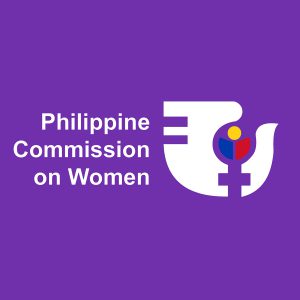Strengthening Law Enforcement and Protection Against Sexual Offenses: Expanding the Anti-Sexual Harassment Law
POLICY BRIEF NO. 5
This policy brief provides the rationale for expanding the coverage of the Anti-Sexual Harassment Law.
WHAT IS THE ISSUE? WHAT HAS BEEN OUR RECENT EXPERIENCE/S WITH REGARDS TO THE ISSUE?
Sexual harassment (SH) and other forms of sexual violence in public spaces is an everyday occurrence for women and girls around the world – in urban and rural areas in both developed and developing countries.2 It is a social issue that is deeply rooted in power relations between men and women, and underlies the view that women are still deemed as sex objects and the “weaker sex”.
The Anti-Sexual Harassment Act of 1995 has been considered as a landmark legislation as it finally gave a name and legal recognition to unwelcome sexual advances. The law defines Sexual Harassment as “committed by an employer, employee, manager, supervisor, agent of the employer, teacher, instructor, professor, coach, trainor, or any other person who, having authority, influence or moral ascendancy over another in a work or training or education environment, demands, requests or otherwise requires any sexual favor from the other, regardless of whether the demand, request or requirement for submission is accepted by the object.”
However, the Law’s definition of sexual harassment is limiting and presupposes the existence of authority, influence or moral ascendancy between the offender and the offended party. It does not specifically address the issue of “hostile environment” resulting from sexual harassment between peers or co-employees.3 Cases in which both the offender and the offended party are peers or have the same rank or status, or when the offended party is the superior officer in a work or education environment cannot be considered as sexual harassment since these are not within the scope of the current Anti-SH law.
WHY IS THE ISSUE IMPORTANT?
According to the Civil Service Commission, from 1994 to 2015, a total of 163 cases of sexual harassment have been recorded, of which 111 cases were resolved.4 Data on Compliance of Higher Educational Institutions with RA 7877 show that in 2011, 42 complaints from State Universities and Colleges (SUCs) and 49 complaints from Private Higher Education Institutions (HEIs) were reported to CHED.5 However, the number of cases in the private sector is difficult to account due to lack of a centralized reporting system. Although no data are readily available on cases of sexual abuse in religious institutions, reports of alleged acts of sexual molestation involving religious leaders appear in the news every now and then. An example of which is the case of a bishop accused of “carnal corruption” of young seminarians.6
A survey conducted in two barangays of Quezon City revealed that 88 percent of women have experienced sexual harassment in public places at least once, and 1 in 7 of the respondents experienced sexual harassment at least once every week in the past year. The most common forms of harassment experienced is wolf whistling and catcalling and the worst forms were flashing, public masturbation and groping. Most respondents said that they were harassed by a complete stranger, while some said that they were harassed by someone they see around the neighborhood, acquaintances and someone close to them.7
These data do not completely represent the situation of sexual harassment in the Philippines but they show that it is happening in public places, in educational or training institutions, in the workplace and even in religious institutions. This reality of daily life limits women’s freedom to get an education, to work, to participate in politics – or to simply enjoy their own neighborhoods. Many women do not report cases simply because of the stigma that still exists, or because their cases do not fall within the purview of the current Anti-SH law.
WHAT ARE THE EXISTING LAWS OR POLICIES RELATED TO THE ISSUE?
Republic Act 9710, otherwise known as the Magna Carta of Women (MCW), provides that women’s rights in all spheres should be promoted and fulfilled and their human rights be protected from violations by private corporations, entities and individuals (Section 5 of the Law and Section 8 of the IRR).
The Civil Service Commission (CSC) promulgated the Administrative Disciplinary Rules on Sexual Harassment Cases through Resolution No. 01-0940 (dated May 21, 2001) which, among others:
1. takes into account not only the Anti-Sexual Harassment Law of 1995 as legal basis but also the Philippine Constitution, the Administrative Code of 1987 as well as the Vienna Declaration and Programme of Action and the Beijing Declaration and Platform for Action;
2. lays down the procedural rules governing the handling and disposition of administrative cases involving sexual harassment;
3. specifies the various categories of sexual harassment (i.e. light, less grave and grave acts of sexual harassment) and their corresponding penalties; and
4. directs all government offices and agencies to formulate their own administrative rules on sexual harassment cases.
Notably, the CSC Rule removed the requirement of the law that the offender should be one with authority, influence or moral ascendancy over the victim hence, it also covers SH among peers.
The local government of Quezon City recently amended their Gender and Development Code (Ordinance No. SP-2501, S-2016) to include provision on the prohibition of street harassment and prescribing penalties of imprisonment of up to 30 days or fine of P1000 to P5000 depending on the gravity of the offense.
WHAT ARE THE CONSIDERATIONS IN ADDRESSING THIS ISSUE IN THE COUNTRY?
Promoting women’s rights and gender equality
Sexual harassment as a form of gender-based violence (GBV) seriously inhibits women’s ability to enjoy their rights and freedoms on a basis of equality with men. Expanding the definition of sexual harassment in the Philippines and strengthening the mechanisms to address all acts of sexual harassment will ensure that women are protected from all forms of discrimination and create a safe environment that will promote the participation of women in economic, social, political, cultural development.
Responding to International Commitments
Addressing sexual harassment is aligned with the Philippines commitment as a State Party to the Convention on the Elimination of All Forms of Discrimination (CEDAW) that requires State Parties to “adopt appropriate legislative and other measures, including sanctions where appropriate, prohibiting all discrimination against women”(Article 2 (g)) and is in adherence to the Declaration on the Elimination of Violence against Women to “pursue by all appropriate means and without delay a policy of eliminating violence against women” (Article 4).
POLICY RECOMMENDATION
The Philippine Commission on Women (PCW) pushes for the enactment of a bill that will amend the Anti-Sexual Harassment Law to include the following:
1. Expanding the scope of acts constituting sexual harassment by redefining sexual harassment as:
a) an act or series of acts involving any unwelcome sexual advances, requests or demand for sexual favors or any act of a sexual nature, whether done verbally, physically or through the use of technology, that has or could have a detrimental effect on the conditions of an individual’s employment or education, job performance or opportunities;
b) a conduct of a sexual nature and other conduct based on sex affecting the dignity of a person, which is unwelcome, unreasonable, and offensive to the recipient; and
c) a conduct that is unwelcome and pervasive and creates an intimidating, hostile or humiliating environment for the recipient8
2. Including in the definition of the law the following:
a) sexual harassment between peers and those committed to a superior officer by a subordinate, or to a teacher by a student, or to a trainer by a trainee, and;
b) sexual harassment committed in public spaces and public transportations by any person
3. Ensuring the right of the offended party to privacy in all stages of the investigation, prosecution and trial and protection from retaliatory acts by the offender such as: termination, denial of promotion, threats, unjustified negative evaluations, or retaliatory suits against the offended party.
4. Strengthening the monitoring mechanism to ensure that public and private offices create and operationalize a Committee on Decorum and Investigation (CODI) tasked to handle cases on sexual harassment.
5. Prescribing penalties for non-compliance or violations of the provisions of the law.
CONCLUSION
Sexual harassment undermines women’s capacity to participate fully and contribute effectively to the nation’s development. It instills fear and curtails women’s right to liberty and security. Women’s experience reveals that sexual harassment is not confined to the realms of the workplace or educational/training institutions. It is a reality that every woman has to confront each day – in the streets, markets, public utility vehicles and other public places; perpetrated by strangers, neighbors, acquaintance, friends, peers and even subordinates. The Anti-Sexual Harassment Law has been in place for more than 20 years now and it is high time that the Law be amended to ensure that women are protected against this form of gender-based violence in all environments.
ENDNOTES
1 This policy brief is an update of PCW Policy Brief No. 10 Strengthening Law Enforcement and Protection against Sexual Offenses: Expanding the Anti-Sexual Harassment Law
2 UN WOMEN (2013).Safe Public Spaces with and for Women and Girls.UN WOMEN.
3 Feliciano, Myrna S. (1996). Philippine Law on Sexual Harassment in the Workplace. Philippine Law Journal
4 Civil Service Commission. Statistical Data on Sexual Harassment Cases as of December 31, 2015
5 Yadao-Sison, Carmelita. Compliance of Higher Education Institutions with the Anti-Sexual Harassment Act of 1995 (2011).
6 Pedresa, Ira (2013)The PH Catholic priests best kept secrets, available here.
7 Rodriguez, Fritzie. The streets that haunts Filipino women. March 8, 2016. Retrieved at: here.
8 See link.
DOWNLOAD a copy.

